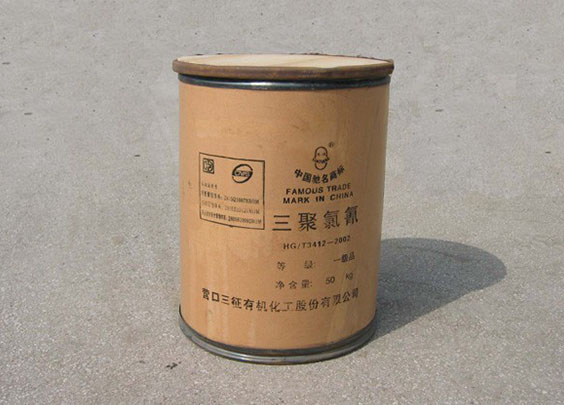
YINGKOU SANZHENG ORGANIC CHEMICAL CO., LTD. LIAONING CHINA
Address: No. 51, Xinxinli, Daqing Road, Zhanqian District, Yingkou City, Liaoning, China電話:0417-3638868
Fax: 0417-3638868
Email: ykszgs@sohu.com
Zip code: 115001
URL::m.gzzjgm.com
In the agricultural production of cyanuric chloride, once the ineffective pesticide is misused, it will have no control effect, and it will cause damage to the crops, resulting in reduced production or even no harvest. The following introduces several methods for identifying invalid pesticides.
Dry powders These pesticides are semi-ineffective if they are damp on the outside and can form a wet mass when held by the hand; if they form a soft lump, they are all ineffective. Normal dry powder pesticides should not absorb moisture and agglomerate.
Wettable powders: Take a little pesticide and pour it into the container, add an appropriate amount of water to make it into a paste, and then add a small amount of water to stir evenly, and observe after standing. If it is a pesticide that has not deteriorated, its suspension is better, the sedimentation speed of powder particles is slow, and the sediment is particularly small. On the contrary, pesticides with different degrees of invalidity or deterioration should be used with caution.
Emulsion of synthetic ammonia manufacturers When distinguishing this kind of pesticide, you can shake the medicine bottle vigorously and let it stand for about 1 hour before observation. If there is a delamination, it means that the pesticide has expired. In addition, you can put the medicine bottle in warm water and observe after the heat is absorbed. If it is a pesticide that has not deteriorated, the sediment in the bottle will slowly melt or even disappear completely; otherwise, it is an invalid pesticide.
How do pesticide manufacturers identify invalid pesticides
Dilution method: Take 100 grams of emulsion pesticides and put 300 grams of water into a glass bottle. Shake vigorously and let it stand for half an hour. If the concentration of the drug solution is uneven, there is emulsifiable concentrate on it, and there is sediment on the bottom, it means that the drug has failed. The more emulsifiable concentrates, the worse the medicinal properties.
Floating method: Take 1 gram of wettable powder pesticide and sprinkle it evenly on the surface of 200 ml of clear water. If it wets and sinks into the water within 1 minute, it is a non-expired pesticide, otherwise, it is an invalid pesticide.
Oscillation method: When oil-water separation occurs in emulsion pesticides, vigorously shake the bottle, and after standing for 1 hour, if a separation layer still appears, it means that the drug has expired.
Hot-melt method: Put the emulsion pesticide with the precipitate into the warm water at 50℃ together with the bottle. After 1 hour, if the precipitate slowly dissolves, it means that the drug has not expired. If the precipitate is difficult to dissolve or does not dissolve, the medicine has deteriorated and is ineffective.
Suspension method: Take 50 grams of wettable powder pesticide, put it in a glass container, add water and stir evenly. After standing for 10 minutes, if the pesticide has poor solubility and the suspended powder is coarse, it is an invalid pesticide.
